DET ALPHA
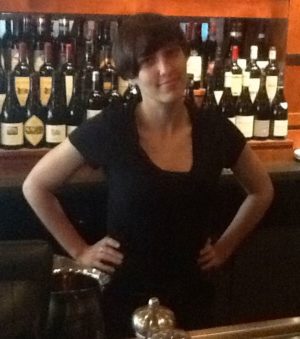
(Sabrina, spiritualist and vendor of spirits behind the Willow Bar).
Sabrina was on duty behind the Willow bar. She is an intensely spiritual mixologist, and you can always get your palm read or get an account of the full karmic impact of whatever is happening on our side of the bar from her. Saturn was apparently in the 11th House, and from what I could gather, that was important because of that planet’s influence “on the right ear, the spleen, the bladder, the phlegm, and the bones.” I knew I was going to be needing all of them, and I thanked her for the information.
I enjoyed the first sip of wine for the day as I waited for my weekly interview, eager to get on with the story of the late 1950s, and hoping to arrive in Vietnam before I ran out of the ability to safely consume the Happy Hour White. RADM Mac Showers arrived presently as we discussed what Saturn might mean for the rest of the week. The Admiral was looking dapper, and he almost asked for an Anchor Steam beer because he was feeling so good. I got organized next to him- white wine where I could reach it, plenty of cocktail napkins on which to take notes and a working pen in my hand. As with nearly all of these discussions, I had hoped to start one place and we wound up somewhere completely different.
“We talked about FIRST Fleet the last couple outings,” he said. “But there was another aspect of readiness and training that I developed while I was on the staff. That is the one I would like to talk about in some detail. In talking to the various elements of the fleet about readiness for deployment to the Seventh Fleet and what they would be requiring once they got to WESTPAC, we realized that the aviators were drastically short of adequate target materials in order to carry out the nuclear strikes for which they were responsible, and for which they were doing a considerable amount of training. They simply didn’t have the materials for training purposes, or, once they were deployed, they didn’t have good target materials to carry out long-range overland strikes into the interior of China or the Soviet Union. So, this became one of my missions, to find out what they needed and to take necessary steps or to have developed better current updated target materials. With the assistance of my aviator assistant N-2, we took it upon ourselves to visit the bases and training facilities of all of the aviation groups that had nuclear strike responsibilities where they were based on the West Coast and where they were carrying out their training activities. Working with them and through AIRPAC, we conducted an extensive series of interviews of the pilots themselves, as well as the squadron and air group officers, to find out exactly what they needed in an ideal situation to carry out their strikes, and we then used this information to devise a target folder that would include all the materials they needed.”
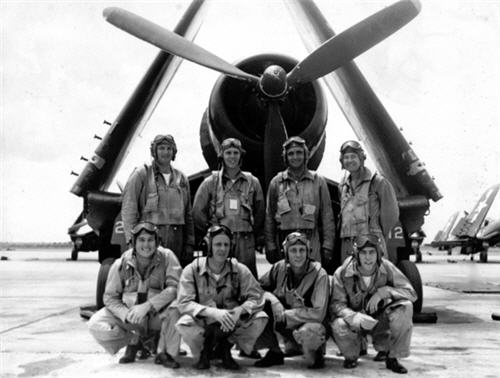
“That can be a challenge. I had an A-7 pilot on the Forrestal Med Cruise in ’90 who didn’t like the satellite image we were able to get of one of his targets. He said he would be approaching from the other side of the power plant he was assigned to take out, and asked if I could get him a picture of the target from the other direction. I realized I couldn’t do it- not while we were on cruise, anyway. It would have meant getting a target nomination up through SIXTH Fleet, and into the scramble for priority with the Imagery Committee back in DC. Who did you go to for support?”
“We worked with a number of people. We worked with our fleet Weather-Guesser, who was actually assigned in the plans division of the staff. We worked with the other officers in the Plans Division, who included an Air Force officer as well as an Army and Marine officer. Through the Air Force officer I even made a trip to SAC to find out generally the types of materials they put in o their target folders for their strategic bombers. This gave us a lot of ideas about . photography, aim-points, check-points, turn- points, all the things you needed to get an aircraft from a carrier ‘feet dry’ and into his target. Of course, the Navy delivery tactics and platforms were substantially different than the Air Force was using with their high-level, long- range strategic bombers. So, we had to modify our target folders accordingly. We did that, and we established in detail the materials the pilots wanted in order to carry out their missions. Having done that, we then encountered the problem of how to produce these target folders. We had the target list. We knew what the targets were, and where they were. We just needed to get the images, charts and check-lists to the pilots who had to fly the missions.”
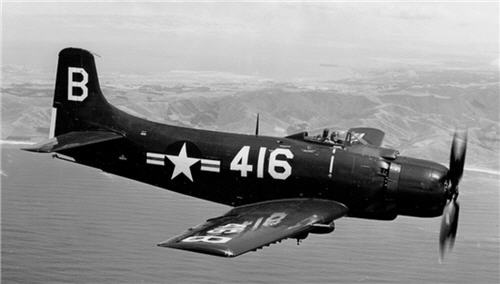
(AD-J Skyraider in flight, one of the slowest aviation delivery platforms for nuclear weapons. Dad often told me that straight and level, the Skyraider could outrun a P-52 Mustang, but if I was going to light up a target in the Far East Military District, I think I would like to have a jet under me).
“So, who were the people who designated the targets? Was that done at the national level or with the Strategic Air Command?”
“Oh yes- it ws all part of the Single Integrated Operational Plan.”
“I knew the SIOP. The people in Omaha were alwys running drills during their work-day, which as a pain in the butt when you are in the Far East someplace. They would go all night sometimes when we had the Emergency Action Message watch on the ship.”
“The detailed information was held at PACFLT and at FICPAC intelligence-wise, not by us. In fact, it was with only with some difficulty that we were able to penetrate the bureaucracy surrounding the list.”
“Did you succeed?”
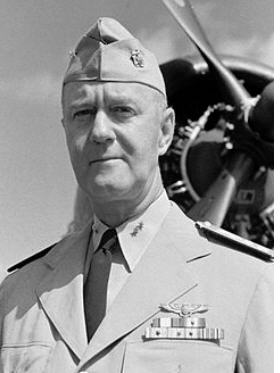
(Admiral Felix Stump).
“To some extent, we did. But I was extremely fortunate in having Captain Rufus Taylor as the N-2 at PACFLT, and he was extremely cooperative and helpful in opening the doors for me. The Plans Officer at PACFLT at that time was then- Captain Grant Sharp, who later became Commander-in – C hief at PACFLT and then the theater commander at PACOM.”
“Some people just can”t bear to leave the Islands!”
“He was the Plans Officer at PACFLT at the time and Admiral Felix Stump was the Commander-in-Chief. We had to convince each one of these officers through a series of briefings about what we were doing, what we needed, and what type of information to which we had to have access. With their cooperation and a lot of pushing by Captain Taylor, and extensive briefings, we did, in fact, push forward to gain access to the necessary information simply to be able to devise target folders. But then the physical production on these targets became the next problem. First Fleet did not have the manpower nor the facilities, nor the information in San Diego, to do this job.”
“Who did? The Fleet Intelligence Center at Pearl Harbor?”
“Just so. The information was held in Hawaii; the raw material was largely held at FICPAC, where there were a large number of people working over photography and various other things that were needed in these folders. They had the photo-interpretation facilities and all of the equipment, none of which we had in San Diego. But despite the fact that the information and facilities existed in Hawaii but not in San Diego, CINCPACFLT still said it was a FIRST Fleet responsibility, because it was a readiness responsibility, and they said, “You proceed to do it, plan it, and do it, and we’ll support you.”
“Sounds typical. So, who did?”
“In the end, the solution was to create a new organization in Hawaii that was co-located with FICPAC, which became known as FIRST Fleet Detachment Alpha, or just “Det A” for short. That was created and billets were
procured from thither and yon within the Pacific Fleet and the air organization and FICPAC and PACFLT and so forth.”
“Birth of a new command billet. Who got the rose pinned on him to take charge?”
“An aviator named Jack Fitzgerald. Jack was a gung-ho aviator who had been in our Readiness Division on the FIRST Fleet staff for more than a year. He and I had become close friends. We had taken several trips together. He had assisted us in devising the content of these target folders as we developed them. When we reached the point of creating First Fleet Det Alfa, he was eagerly anxious to head it. It was a natural; he was an aviator, and he knew the problem. He was interested and competent, and he wanted to move to Hawaii. So we did; he became the officer-in-charge. He moved to Hawaii, and he was the only billet that we gave up to form the Detachment. All the other billets, and I think we got twenty or thirty people who made up this detachment, came from within PACFLT resources. They used FICPAC’s materials, photos, graphic materials, and used FICPAC’s equipment, photo-interpretation equipment, drafting tables, and so forth. And we literally, physically, produced target folders, one by one, by one for the designated targets, including the materials that we had identified that needed to be provided to the aviators so that they could study their en route targeting, their check points, their delivery points. all of which was an art form that had been developed for nuclear bomb delivery in those days. Of course, it was different for different types of aircraft. We had the A-3s that were large twin-engine jet bombers, and we had the ADs, which were a single-engine, propeller-driven plane that would fly long legs at low altitude and deliver their bombs by a pop-up mode; an ‘over-the-shoulder’ delivery it was called in those days. So we had to devise slightly different target folders for different types of aircraft.”
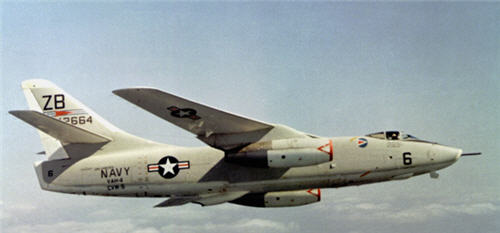
(A-3 Skywarrior).
“Those were the days of the Navy’s first adventure with cruise missiles, the subs that carried the Regulus missiles. Did you also have to produce targeting material for them?”
Mac sighed, remembering. “Yes. We tried, but we didn’t really ever get into that because they didn’t need anywhere near the amount of information, and the type of information that a live pilot flying an airplane had to have. I don’t recall where their targets were designated. We didn’t do that; we didn’t designate the Regulus targets. But I believe that they were provided with target materials by whatever authority was designated their targets. That was never a very extensive program, and they didn’t have very many targets since they didn’t have very many weapons.”
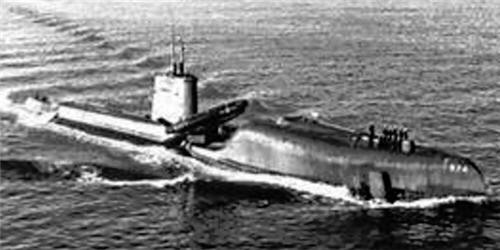
(USS Grayback (SS-574) underway on Regulus missile patrol).
“Well. There were not that many Soviet targets in the Far East beyond Vladivostok and the cluster of submarine targets on the Kamchatka Peninsula.”
“True. As I recall, the ones we were generally concerned with were operating near Petropavlovsk, and in the northern reaches of the Soviet Union. The ones around Vlad in the Sea of Japan were air targets.”
“We mostly worried about Petr, where their front line boomers and attack subs were based. But it sounds like this was the birth of the target folder era for the carrier pilots.”
“Yep. The target folder program and the creation and management of First Fleet Det Alfa was really a major development and became a leading steady-state activity in the intelligence division during the two years that I was there.”
“I know generations of intelligence officers who have spent time helping to build those folders, Admiral. It was the main part of any squadron or Air Wing job.”
“It was a stimulating tour. It was a job in which, for the first time, I really felt like I was given a free hand and very good support in developing some innovative things — mainly these target folders, which had not existed previously. It was unbelievable to me when I realized what the Navy pilots were expected to do and how little they had to do it with. When we used to sit down with pilots who were flying these planes, and told them that we would provide them target materials so that they could do their job, they were just astounded. This was the first time anybody had come to them and said, “I’ll help you.”
“Better than telling them to ‘fly west ’til you see a naval base,’ I suppose.”
“That is for sure. It was also heartening to know that we were doing something that somebody really appreciated. Of course, the program was still going on in high gear when I left, and I don’t what the eventual outcome of it might have been. Except that I do know that a few years later when I got back out to PACFLT as the N-2, I discovered that DET Alpha had been disestablished, and FICPAC had, in fact, taken over the target folder preparation, and they were doing it, which they really should have done originally.”
“You almost had the tail wagging the dog, didn’t you?,” I said, waving to Sabrina down the bar for emergency replenishment of the Happy Hour white and some positive psychic energy. Talk about nukes always leaves me a bit drained.
The Admiral gave me a thin smile of satisfaction. “Well, I don’t know what FICPAC was doing at the time that was so all important, but ‘Rufe’ Taylor said that he simply couldn’t take on this mission as an additional function and that he would help us create Det. Alfa if we would get the people and staff it. Well, we did. He helped us get the billets, he provided the spaces, and we got photo interpreters from various fleet units. We found them were scattered around the Pacific Fleet and many were not even working in rate looking at imagery. So we were able to beg, borrow, and steal photo-interpreter talent and got them assigned to our detachment.”
How much support did you get from the Office of Naval Intelligence back in Washington? That seems like it would be a national mission.”
“Very little. It wasn’t their concern; it was really a Pacific Fleet show. I worked with an organization in San Diego that…” Mac looked up, a bit startled that his memory had failed him.”I can’t remember the acronym for it, but it had control of all personnel assigned to all ships and units in the Pacific Fleet, and if I said I wanted to find out where all the Photo Interpreters are, they could give me a computer printout of a hundred or so photo-interpreters who were scattered throughout the fleet. It was a success story. I never did know if the people on the Atlantic side ever did anything like this. We were pretty autonomous.”
“OK,” I said, putting down my pen to concentrate on the wine for a moment.”Two great Fleets, Atlantic and pacific, separated by a common Navy. So that about covers your time in San Diego. What was next?”
“Back to Washington. And back to Special Intelligence and Y-1, finally. After having left Y-1 back in 1950 to go to London, I now had orders to come back and head Y- 1. I was delighted to come back because I really felt like I was coming home after having been around the world in Europe and detoured in the Intelligence School then out to San Diego. It was with great delight that in 1957 I headed back to Washington. As a matter of fact, I had the family already back there because the house that we owned at that time had been rented to a Navy Commander and his family, and they left in December on assignment and we decided to let the house stand vacant until we got back.”
“Ah, the joys of the military move!”
Mac laughed and reached for his Virgin Mary.
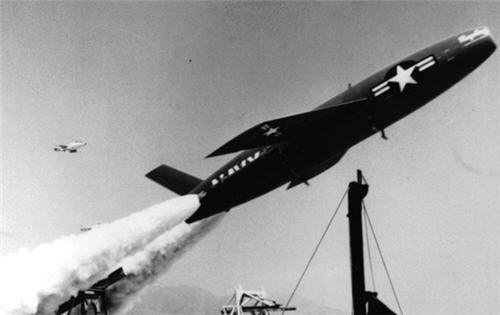
Copyright 2017 Vic Socotra
www.vicsocotra.com
156
J
